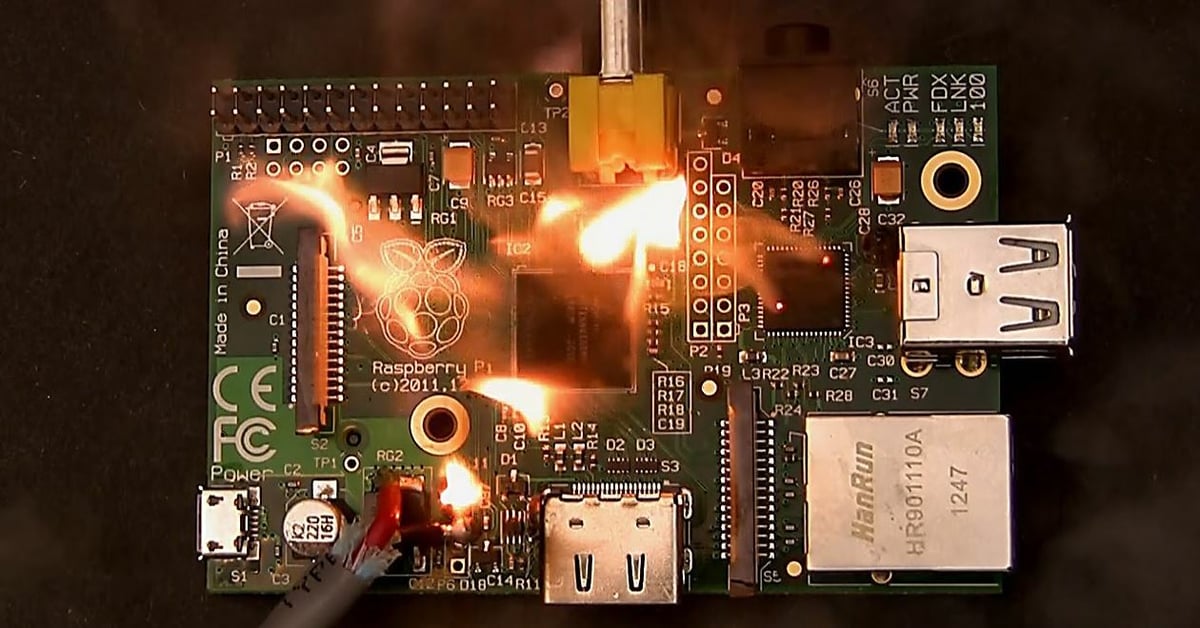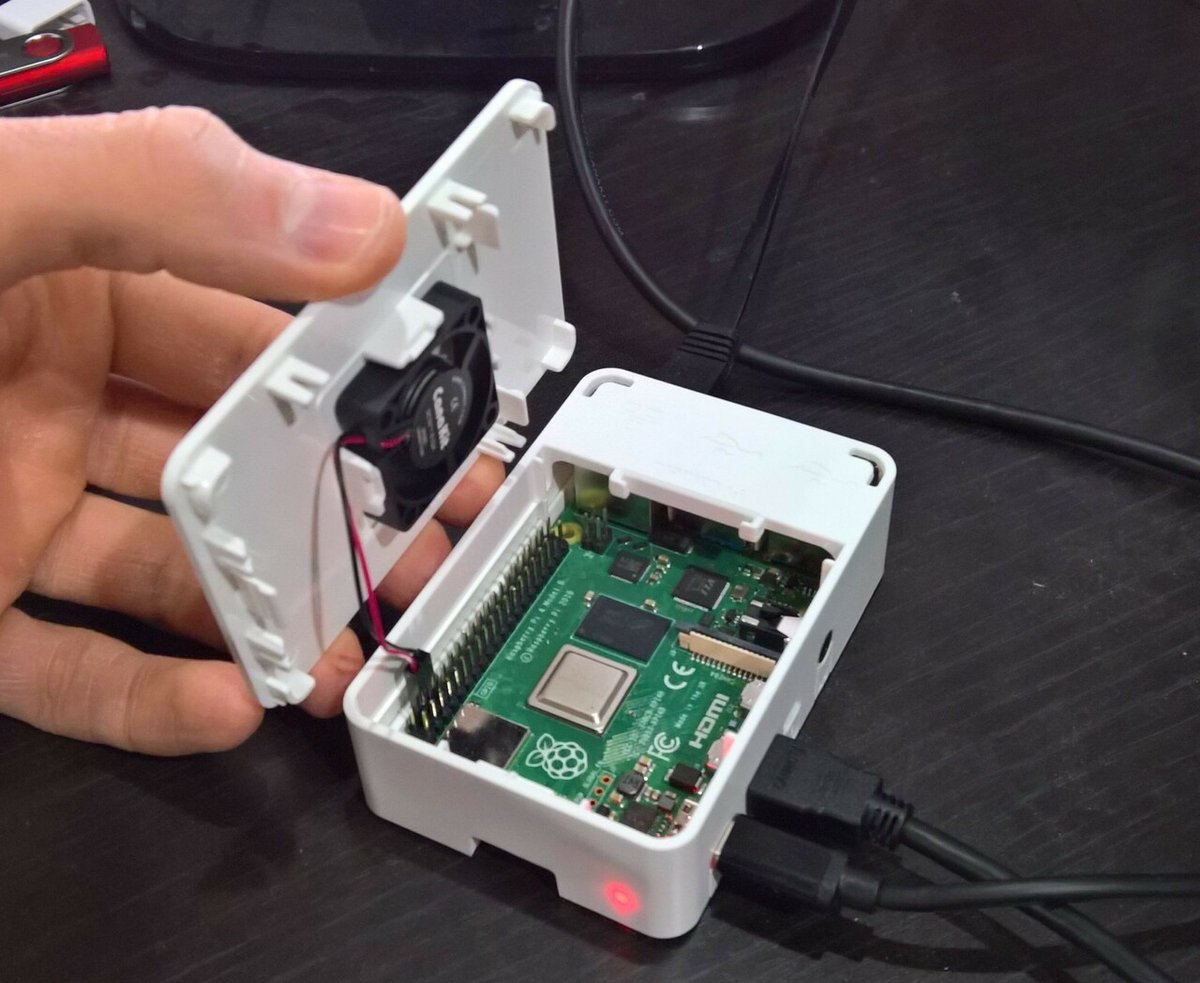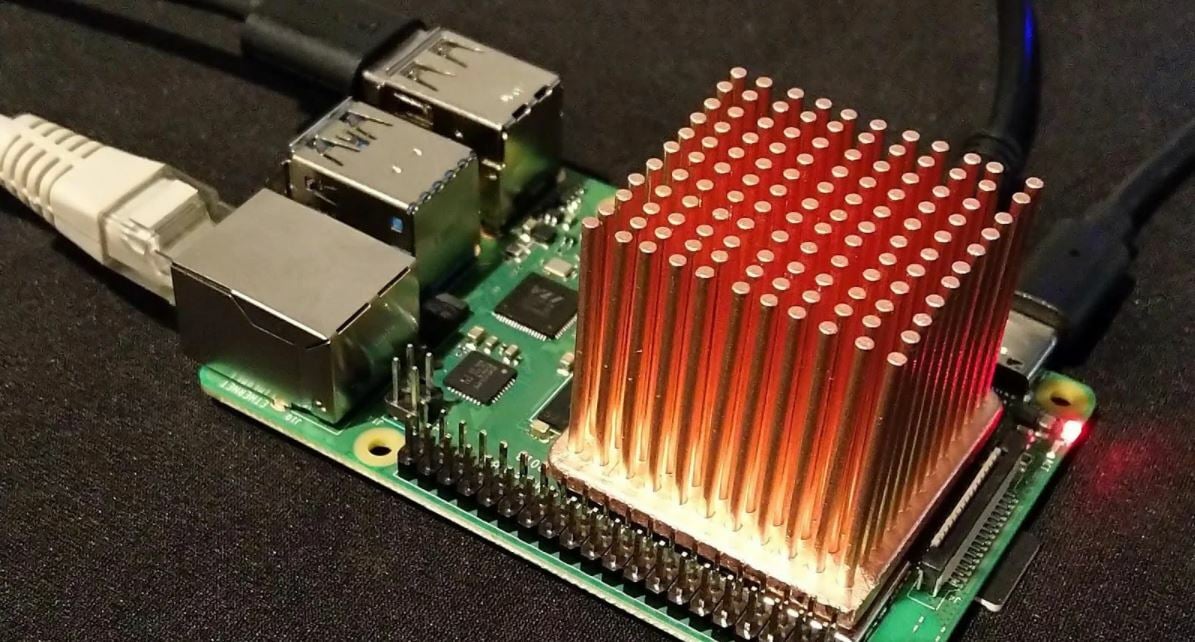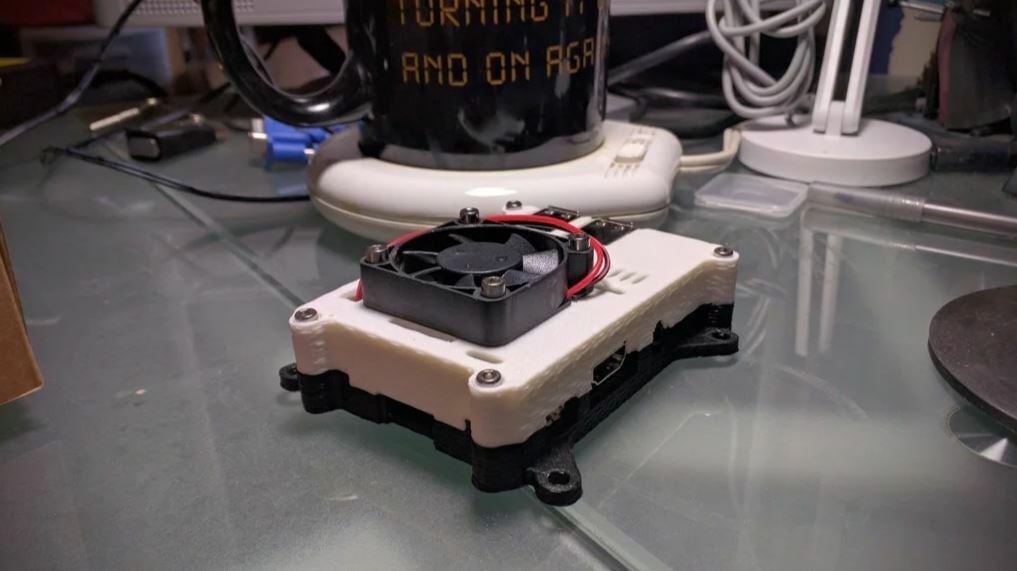It's Getting Hot in Here

The Raspberry Pi 4 is one of the best single-board computer (SBC) offerings from the Raspberry Pi Foundation. It’s a computing beast, with up to 8 GB of RAM and a powerful Broadcom 64-bit quad-core Cortex-A72 processor that runs at 1.5 GHz. The board also has an abundance of ports: USB 2.0, 3.0, and Type-C, HDMI, camera, Gigabit Ethernet, and more!
The Raspberry Pi 4 was a hit when it came out, and inevitably, like any SBC or mainboard nowadays, people love to overclock it. Overclocking is the process of raising the processor’s (CPU) clock rate (measured in GHz) to increase performance. The primary limitation for a CPU’s clock rate is the temperature; the higher the speed, the quicker the processor heats up.
If you raise the speed too much, the board can reach unsafe temperatures and potentially damage itself. The main processing chip is the part that gets really hot, and if heat alone doesn’t directly damage your Pi, it can make your SBC work more slowly, according to some users. The Pi 4’s standard clock rate is 1.5 GHz, but you can safely adjust this rate to 2.1 GHz if you properly cool the board.
If you have your Pi 4 in an enclosure or case, this can trap the hot air, only inciting higher temperatures. To safely and efficiently overclock or maximize performance on your Raspberry Pi 4, you should have some sort of cooling mechanism or ventilation to prevent overheating.
In this article, we’ll go over passive and active cooling as well as some solutions for each category so that you can safely overclock your Raspberry Pi 4.
Passive vs. Active Cooling

Cooling techniques can fall into one of two categories: passive or active. Both types will lower the temperature on your SBC, but, as you might expect, active cooling does it better.
Passive cooling involves no additional activity but rather permits existing airflow to cool your board. Examples of passive cooling include more ventilation holes on an SBC enclosure or a heat sink placed on top of the CPU. Passive cooling is an easier option, more suited for those who don’t plan on overclocking their SBC but still want to be safe when it comes to preventing overheating.
Unlike passive cooling, active cooling involves additional activity, which is usually adding airflow to your SBC’s ecosystem. The most obvious example of active cooling is a fan directed at your CPU. Active cooling is definitely more effective for lowering the temperature on your Raspberry Pi 4, especially if you’re overclocking the board.
While active cooling isn’t always necessary, it’s a good safety measure to help ensure that your Pi continues to work properly. If you overclock your Pi without a fan, the Pi could get too hot, and you might notice that performance suffers. For this reason, we recommend using a fan if you plan to overclock.
Now let’s get into the specific solutions!
Passive Cooling Solutions

As we mentioned, passive cooling involves no additional activity, but rather gives an object’s heat more room to spread or dissipate. Often, passive cooling comes in the form of a heat sink or openings in an enclosure.
Heat Sinks
If you want to use a heat sink, it should be placed on top of the processor chip, as this is the part that takes the most heat. The larger the heat sink, the more effective it is because it provides more surface area for the heat from the CPU to spread and dissipate. It’s important to note that heat sinks don’t eliminate heat, they just help it move away naturally.
Open Case
A Raspberry Pi case is another way to passively cool your SBC as long as the case follows certain guidelines. Make sure the case has holes to allow air to flow in, and the more ventilation it has, the better. Still, placement is important: You want holes that are in front of the processor chip. If you can, keep the case standing vertically so there’s natural air convection.
Cool Environment
When deciding where to keep your Raspberry Pi 4, try placing it in a cooler area, or at least avoid leaving it in warm, tight spaces. Open windows or vents that add cool air to a room are also helpful. In other words, avoid direct sunlight or placing it near heating elements.
Underclocking
Another way to passively cool your Raspberry Pi 4’s CPU is by underclocking. The Pi 4 actually automatically underclocks when it notices that it’s too hot or inactive. You can even set the limit so that it won’t ever reach the standard clock speed in the first place.
This method involves decreasing the standard clock speed of 1.5 GHz to a lower value. While the Pi 4’s performance will slow down when you lower the clock speed, it’s an easy way to keep the CPU cool if you’re not using it for high-performance tasks that require higher clock speeds.
For more, you can check out Alex Ellis’s Pi 4 cooling guide.
Active Cooling Solutions

As we’ve mentioned, active cooling involves additional activity, which almost always incorporates a fan. Fans range in effectiveness, depending on several factors, including size and where they’re located. Wherever there’s a fan, make sure that near the “sucking in” side, there’s an open space for it to take new, colder air from outside the Pi’s area.
There are a few different fans that you can use on your Raspberry Pi 4 to effectively cool it down. Some examples include the Pimoroni fan “shim”, a fan and heatsink combo, and a simple enclosure fan.
Fan HATs
The Pimoroni fan is an example of a Raspberry Pi 4 HAT (hardware attached on top), meaning it’s powered by your Pi 4. This particular HAT uses a jumper pin power connection. Users have mentioned it works very well, stating that it isn’t too loud and provides superior cooling. Other fan HATs exist too, so don’t think that the Pimoroni is your only option.
Hybrid Options
The fan and heatsink combo is another popular cooling method for the Raspberry Pi 4. Like the Pimoroni, it can be powered by the Raspberry Pi via jumper pins.
Generic Options
Lastly, you can also use a generic fan on top of your Raspberry Pi enclosure or casing. Many 3D printable options exist that work with basic (and inexpensive) fans. If you’re making your own or choosing a specific fan and case, make sure the fan has an entryway for outside air and is placed over the processor chip.
Lead image source: HappyGamer
License: The text of "Raspberry Pi 4 Cooling: How to Keep the Heat at Bay" by All3DP is licensed under a Creative Commons Attribution 4.0 International License.
CERTAIN CONTENT THAT APPEARS ON THIS SITE COMES FROM AMAZON. THIS CONTENT IS PROVIDED ‘AS IS’ AND IS SUBJECT TO CHANGE OR REMOVAL AT ANY TIME.
